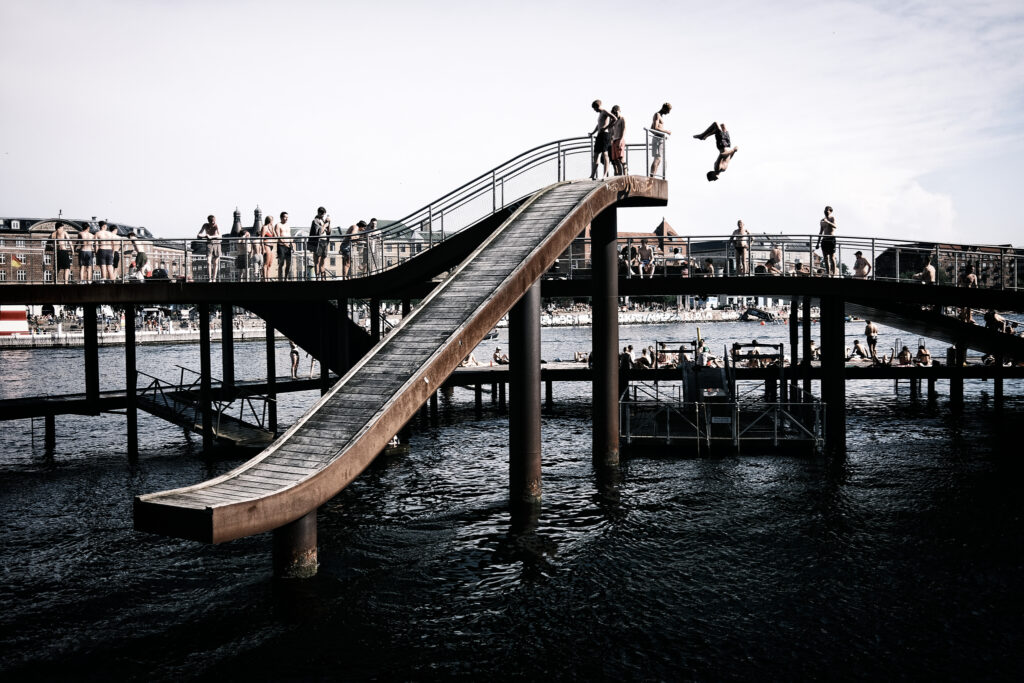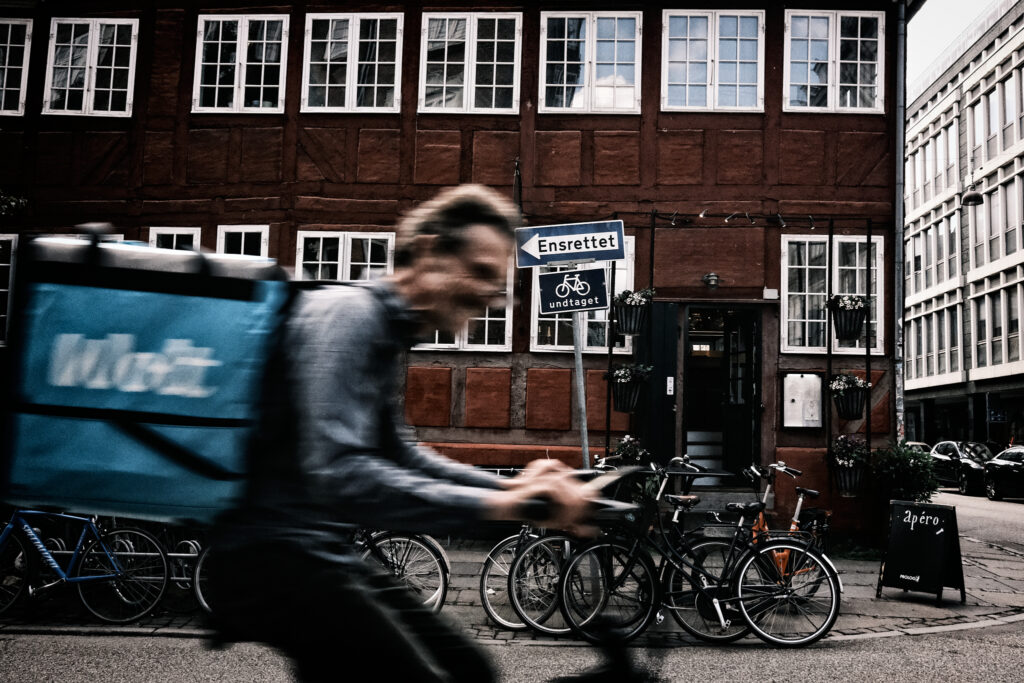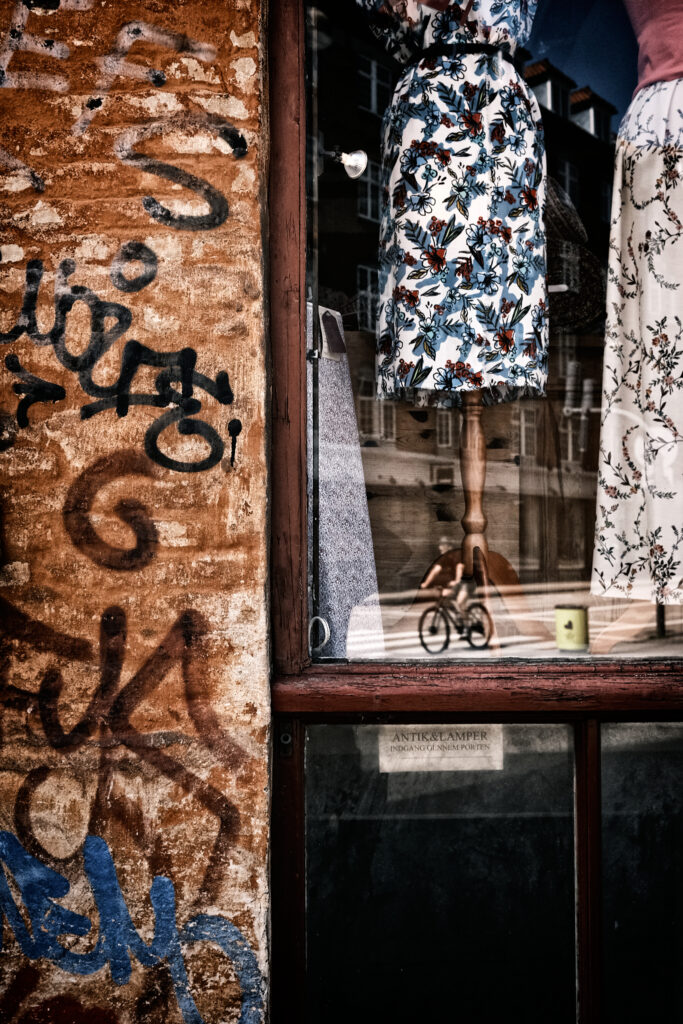Copenhagen, with its charming streets, iconic architecture, and vibrant city life, is a city full of countless opportunities to capture small magical moments that together weave a living narrative of urban life.
Magical street photographs often stem from spontaneous moments. These images capture genuine emotions and interactions, providing insight into the lively life within a changing urban landscape. Part of Copenhagen’s magic lies in its constant movement, an energy that I strive to encapsulate in my photographs.
Often, I position myself on a street corner and observe life unfolding over time. At some point, something unexpected happens, and ideas for subjects arise in the moment.
Interesting subjects can be found everywhere in the city. Often, I position myself on a street corner and observe life unfolding over time. At some point, something unexpected happens, and ideas for subjects arise in the moment. Capturing the city in photographs can be challenging. It may seem chaotic, and the same technique applies as when I photograph in the forest, with a tangle of branches and leaves everywhere. The key is to isolate the subject and bring order to chaos with a clear focal point, helping the viewer interpret the photographer’s intention and read the story of the photograph.
Human interactions are the heart of any city. The daily encounters between people – whether on the street, in cafes, or at harbor baths – create a lively and dynamic atmosphere. These interactions are the driving force behind the city’s pulse. From busy mornings with people heading to work to lively evenings in restaurants and bars, it is human activity that gives the city its rhythm. We have all seen pictures of cities without a pulse, of ghost towns devoid of people. During the coronavirus pandemic, the city lost its vital organs, and the pulse became so low that Copenhagen and other cities resembled urban hospices – thought-provoking and frightening at the same time.



